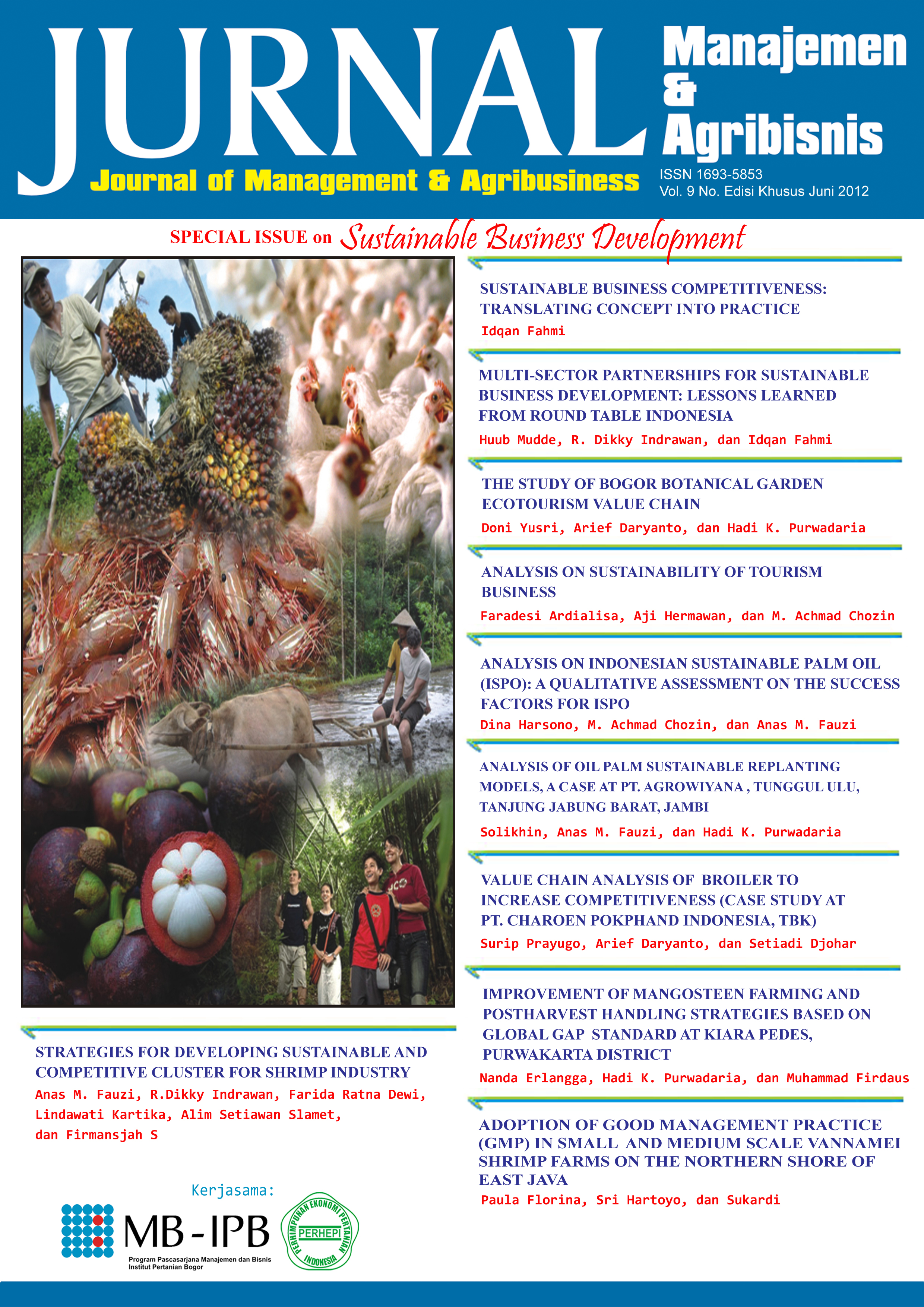Abstract
The objective of this study were : 1) to improve development of Bogor Botanical Garden ecotourism value chain, 2) to recommend strategies of development for Bogor Botanical Garden ecotourism value chain, and 3) to formulate programs that increase value added for Bogor Botanical Garden value chain, especially for involved SME’s. Data collected from survey, in depth interview, and literature was analyzed using descriptive analysis, value chain analysis, SWOT analysis. The results of SWOT analysis indicated that the strength of The Bogor Botanical Garden value chain was the well known Bogor Botanical Garden, the weakness was lack of investment to improve the Bogor Botanical Garden, the opportunity was the support of government, and the threat was the growing of ecotourism competitor. Recommended strategies were : 1) relying on the strenghts of Bogor Botanical Garden as a focal point of the plus ecoedutourism programs, 2) improving quality of human resources at each value chain, 3) increasing investment for the development of value chain, and 4) marketing Bogor Botanical Garden as past of various integrated packages with other tourism objective in Indonesia.
Keywords: Bogor Botanical Garden, Ecotourism Value Chain, SWOT Analysis
Authors
Authors who publish with this journal agree to the following terms:
- Authors retain copyright and grant the journal right of first publication with the work simultaneously licensed under a Creative Commons Attribution License that allows others to share the work with an acknowledgement of the work's authorship and initial publication in this journal.
- Authors are able to enter into separate, additional contractual arrangements for the non-exclusive distribution of the journal's published version of the work (e.g., post it to an institutional repository or publish it in a book), with an acknowledgement of its initial publication in this journal.
- Authors are permitted and encouraged to post their work online (e.g., in institutional repositories or on their website) prior to and during the submission process, as it can lead to productive exchanges, as well as earlier and greater citation of published work (See The Effect of Open Access).

